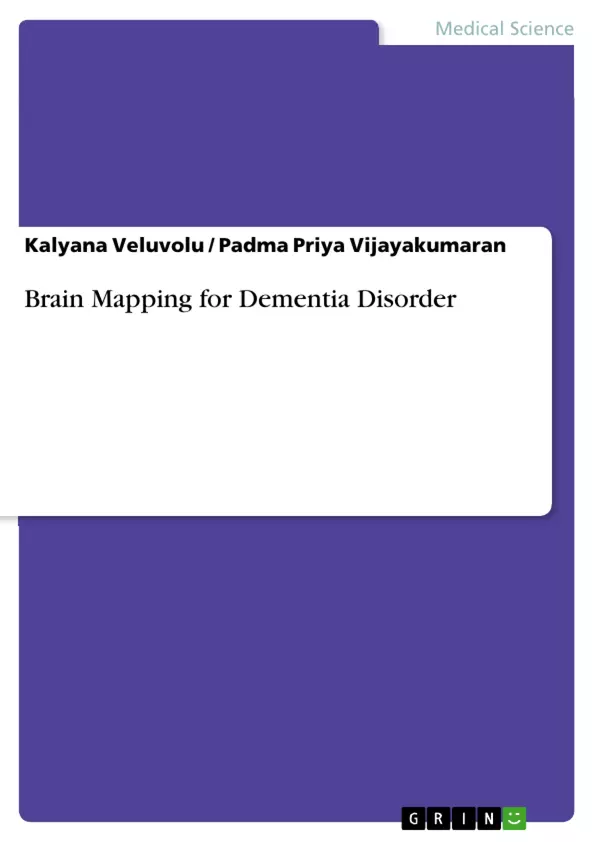Functional mapping of the nervous system helps to identify the activity in the human brain during certain tasks. The difference between the two conditions helps you to understand the electrode nodes that cause a particular change in the neural state. Therefore, in this book, we will witness the functional difference between healthy people, Alzheimer’s (AD) patients, multiple cognitive disorder (MCI) patients, and dementia patients. This gives the insight into the pair of electrodes that cause the progression of the disease from MCI to AD to dementia. This will help us in designing the biomarker in the future.
Inhaltsverzeichnis (Table of Contents)
- 1 Introduction
- 2 Neural Disorders, Dataset Description and Preliminary Signal Processing
- 2.1 Alzheimer's Disease
- 2.1.1 Attention deficit/hyperactive disorder (ADHD)
- 2.2 Dataset description
- 2.3 Signal Decomposition.
- 3 EEG functional connectivity methodologies
- 3.1 Synchronization Studies
- 3.1.1 Amplitude and Phase synchronization
- 3.1.2 Phase Locking Value (PLV)
- 3.2 Frequency dependent studies
- 3.2.1 Approximate (AE) and Transfer Entropy(TE)
- 3.2.2 Spectral Entropy
- 3.1 Synchronization Studies
- 4 Phase Locking Value
- 4.1 Time-Frequency PLV spectrum.
- 4.2 Identification of Differential Scalp Maps
- 4.3 Network Measures
- 4.3.1 Path length (PL) and clustering-coefficient explanation . .
- 5 Wavelet Spectral Entropy
- 5.1 Wavelet Spectral Entropy Time-Frequency Spectrum
- 5.2 Wavelet Spectral Entropy
- 5.3 Identification of Reactive band (RB) and Most Reactive Pairs (MRP)
- 5.4 Functional connectivity and Network Measures
- 5.5 Discussion.
- 6 Conclusion and Future works
Zielsetzung und Themenschwerpunkte (Objectives and Key Themes)
This book delves into the functional mapping of the nervous system to understand the brain activity associated with dementia disorders. It aims to analyze the differences in brain activity between healthy individuals, Alzheimer's (AD) patients, multiple cognitive disorder (MCI) patients, and dementia patients. The authors aim to identify the specific electrode nodes that trigger the progression of the disease from MCI to AD to dementia, ultimately paving the way for the development of biomarkers for these disorders.- Functional mapping of the nervous system in dementia disorders
- Comparison of brain activity between different patient groups and healthy individuals
- Identification of electrode nodes associated with disease progression
- Development of biomarkers for dementia disorders
- Analysis of EEG functional connectivity methodologies
Zusammenfassung der Kapitel (Chapter Summaries)
- Chapter 1 provides an introduction to the topic of functional mapping of the nervous system and its relevance to understanding dementia disorders. It also outlines the book's objectives and the different patient groups that will be analyzed.
- Chapter 2 focuses on the different types of neural disorders, particularly Alzheimer's disease and attention deficit/hyperactive disorder (ADHD). It describes the datasets used for the analysis and the preliminary signal processing techniques applied.
- Chapter 3 discusses the various EEG functional connectivity methodologies employed in the study. These methodologies include synchronization studies, such as amplitude and phase synchronization and Phase Locking Value (PLV), as well as frequency-dependent studies, such as Approximate Entropy (AE) and Transfer Entropy (TE), and Spectral Entropy.
- Chapter 4 delves into the application of Phase Locking Value (PLV) in analyzing the brain activity of dementia patients. It explores the time-frequency PLV spectrum, the identification of differential scalp maps, and network measures like path length and clustering coefficient.
- Chapter 5 investigates the use of Wavelet Spectral Entropy in analyzing brain activity. It discusses the time-frequency spectrum of Wavelet Spectral Entropy, the identification of reactive bands and most reactive pairs, and the relationship between functional connectivity and network measures.
Schlüsselwörter (Keywords)
The book focuses on the study of brain activity associated with dementia disorders using functional mapping techniques, particularly EEG functional connectivity methodologies. Key themes include Alzheimer's disease, MCI, dementia, brain activity analysis, EEG, synchronization studies, Phase Locking Value (PLV), Wavelet Spectral Entropy, and network measures. The book aims to contribute to the development of biomarkers for these debilitating diseases.- Citar trabajo
- Kalyana Veluvolu (Autor), Padma Priya Vijayakumaran (Autor), 2020, Brain Mapping for Dementia Disorder, Múnich, GRIN Verlag, https://www.grin.com/document/957909



